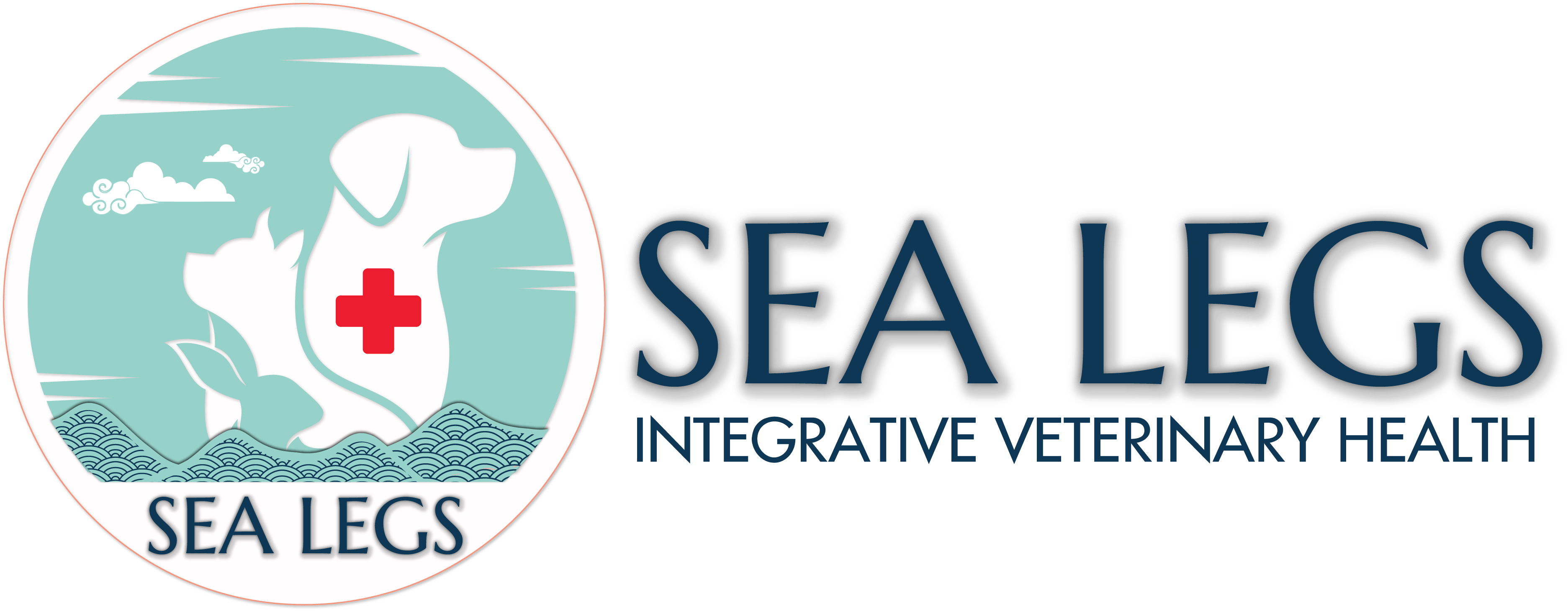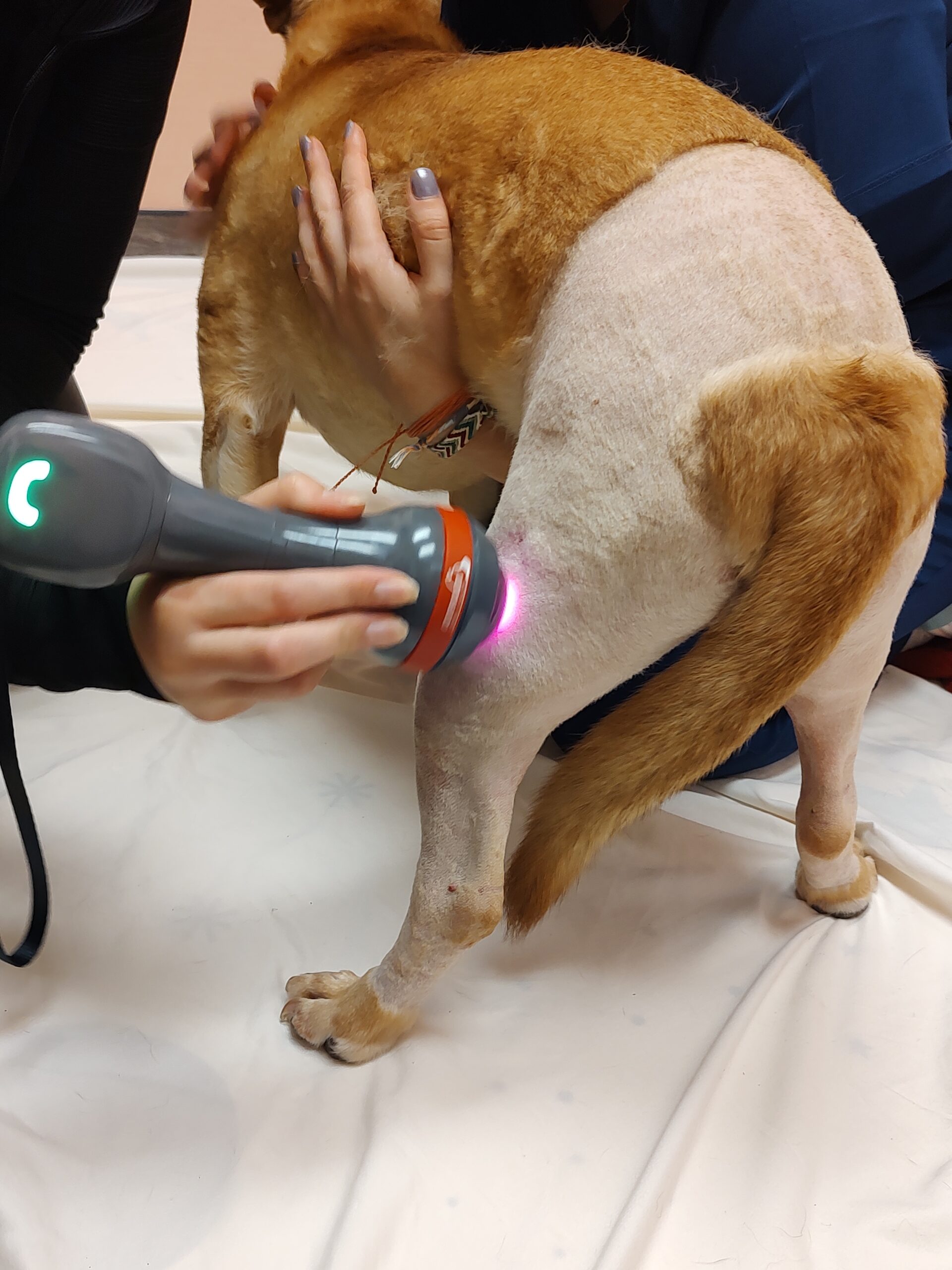
Understanding Canine Limping and Pre-Surgical Care
This is Part 2 of a series of blog posts on recognizing pain in our pet friends. You can find Part 1: “Is My Pet in Pain?” here. Stay tuned for more!
One of the first things people notice after an injury is a limp or lameness in their dog. This is often what prompts a visit to their veterinarian in the first place. One thing we often hear is “He/She is limping, but they aren’t in pain.” People tend to look for more obvious signs of pain in their pets, such as crying out or licking the affected area. However, the limping itself is a sign of pain. Think of anytime you have twisted your ankle, broken a bone, or torn a ligament. You were limping because it hurt when you fully put weight on the affected limb. The same is true for our pets.
The next steps are evaluation by a veterinarian. Depending upon the clinical signs and injury, they may suggest rest, x-rays, or more advanced imaging like CT scan or MRI. Depending upon the time between injury and your veterinary appointment, your pet may have been limping for days to weeks. During this time, muscle wasting occurs rapidly. Multiple studies have shown atrophy of the injured/unused limb of up to 60% by two weeks, with muscle mass returning between 4 and 8 weeks.
Cranial or anterior cruciate ligament rupture is one of the most common orthopedic conditions seen in the dog. In people, cranial cruciate ligament rupture tends to be traumatic. These injuries are more common in males because of sudden change in direction and/or landing due to trauma or contact during a sport. While dogs also undergo traumatic cranial cruciate rupture, it also can occur due to joint inflammation and degradation of the ligament. Dogs have been shown to have signs of inflammation in their joints prior to exhibiting signs of lameness and cruciate rupture. This results in a tear occurring from normal weight bearing and activity, rather than a traumatic event.
Rehabilitation and surgery play an active role in recovery from these injuries. We generally recommend that dogs see a veterinary surgeon boarded by the American College of Veterinary Surgeons. They will outline the different options for repair. In recent years, more surgeons favor toward a tibial plateau leveling osteotomy (TPLO) surgery. These dogs tend to have a faster recovery and overall improved prognosis for return to activity.
Prior to surgery, we can focus on pre-surgical care: pain control, maintaining muscle mass, and keeping the patient in optimal health prior to surgery. Firstly, at Sea Legs Integrative Veterinary Health, we have a Class IV laser. Laser therapy has been approved by the FDA for treatment of chronic, minor pain. The laser light has an inhibitory function on pain receptors. Laser also stimulates local production of endorphins and enkephalins, which may have a local pain-relieving affect. It has also been shown to promote nerve recovery after injury, improve collagen organization and inhibit inflammation. Regular laser treatments can be applied both pre-and post-operatively to improve return to activity.
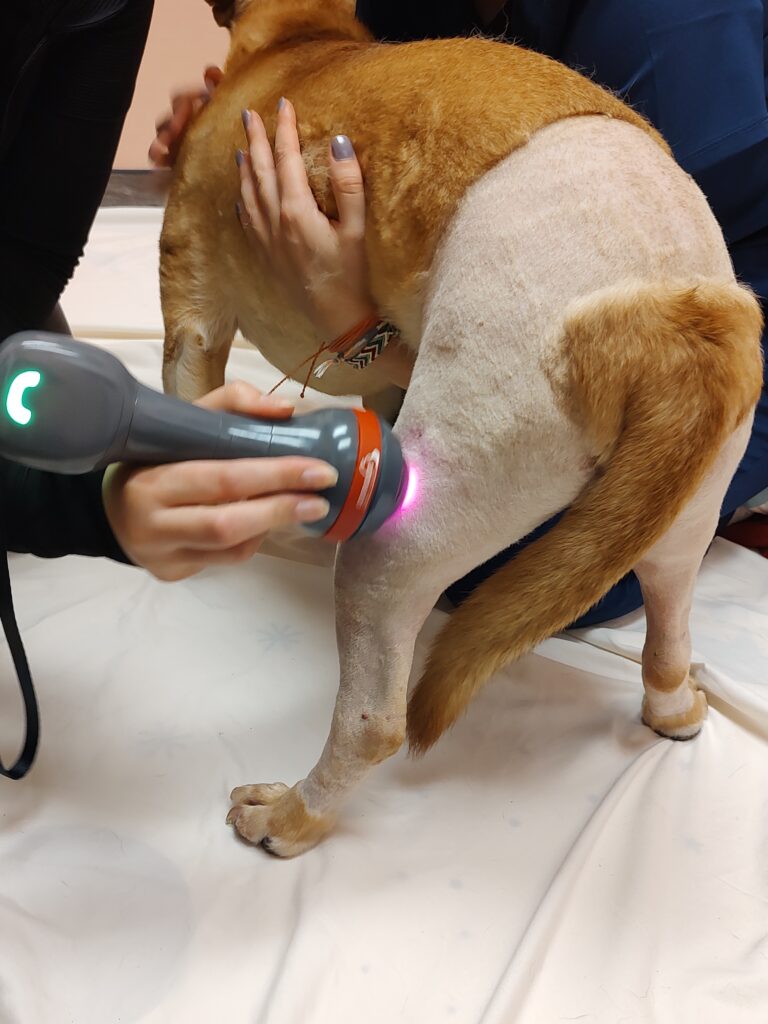
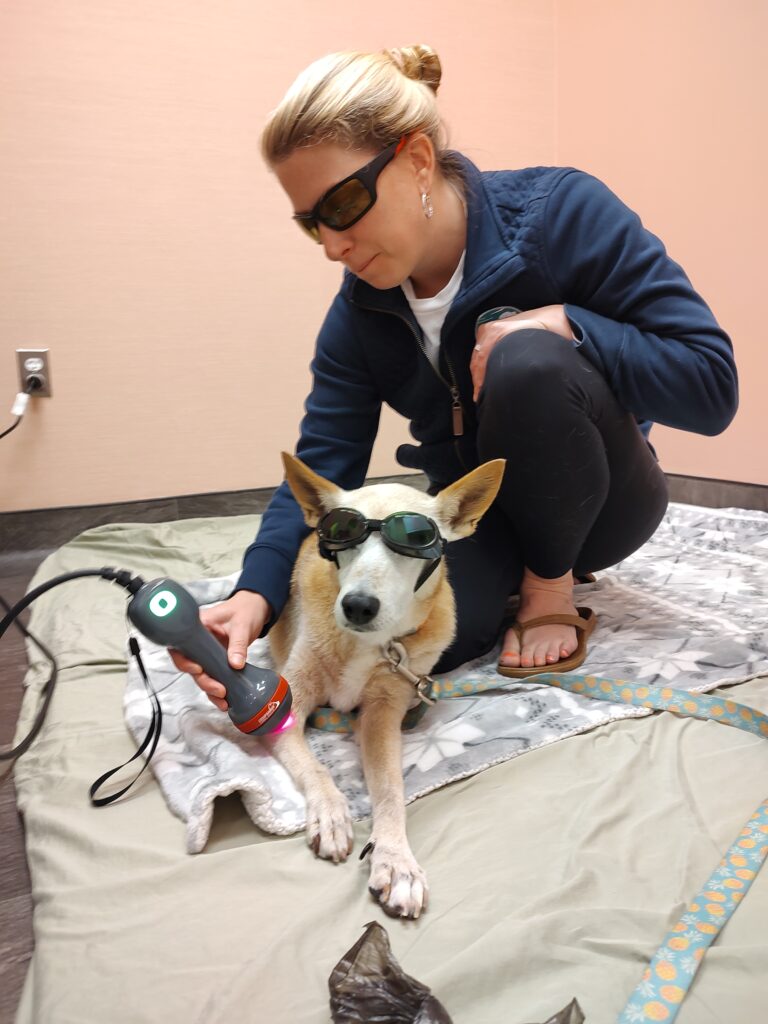
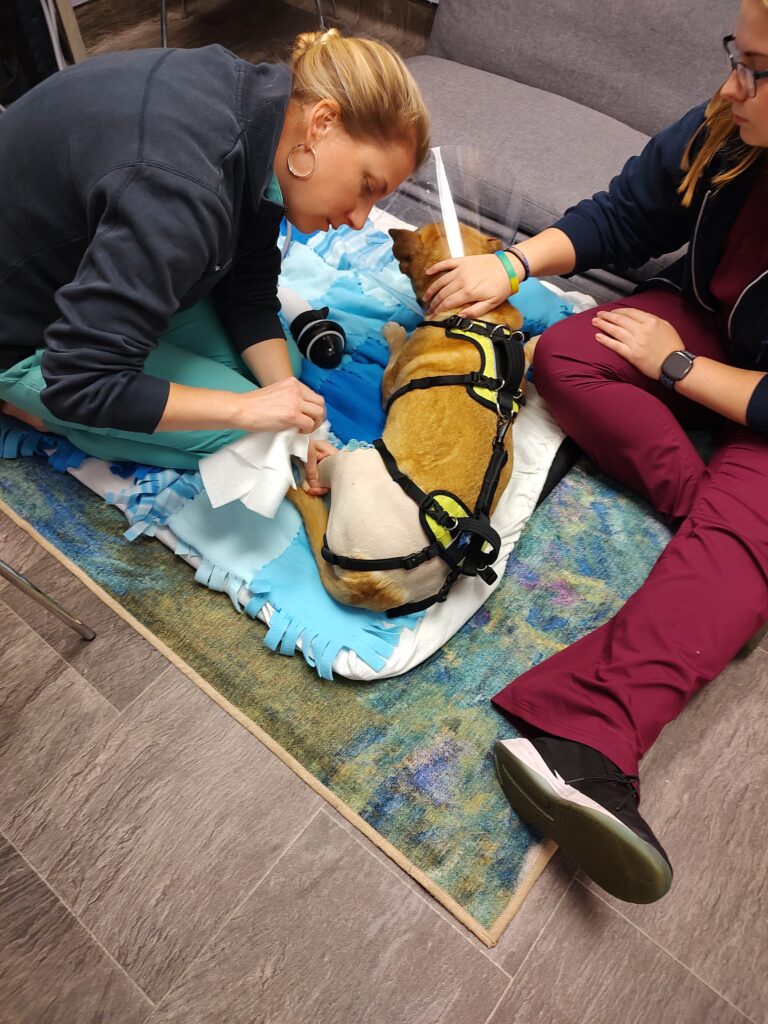
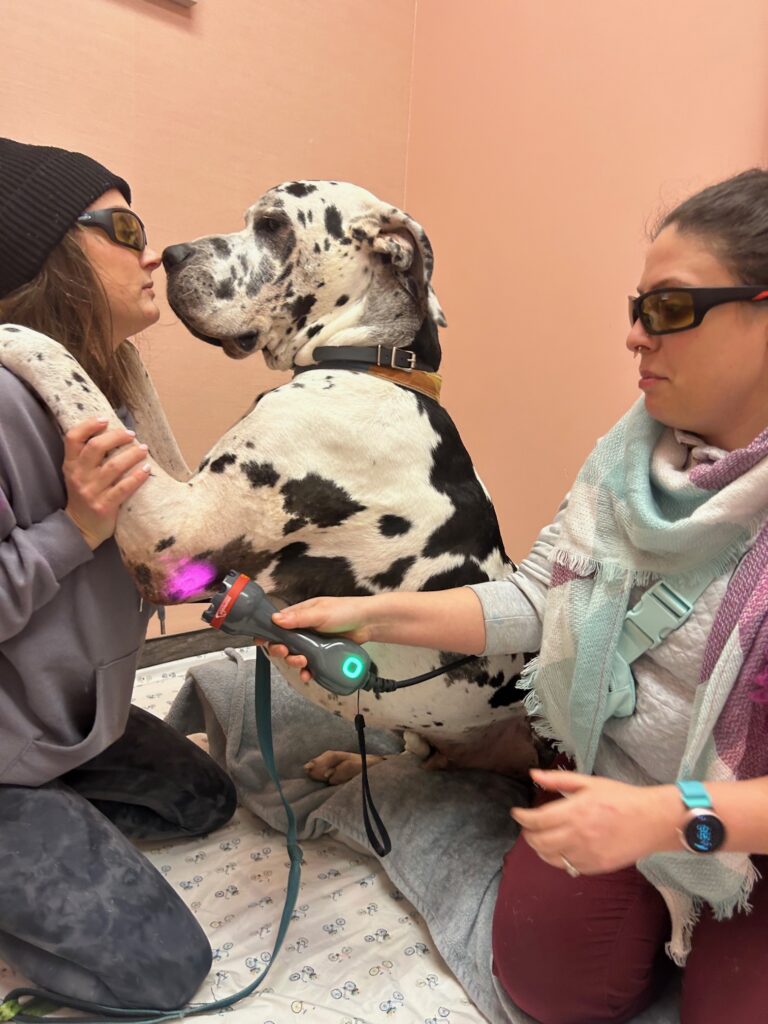
Shockwave therapy refers to high pressure acoustic waves produced outside the body. Shockwaves are part of regenerative medicine to help promote healing and pain relief in tendons, ligaments and bones. After the shockwave is generated in the machine, it is transferred into tissues via ultrasound gel. Once the shockwave is absorbed by tissues, it leads to a release of local pain relievers while also blocking pain transmission. It also leads improved bone healing, tendon remodeling and improved angiogenesis, or migration of blood vessels to improve healing.
During this pre-operative period, we can also maintain safe exercise environments to reduce muscle loss and keep joints in optimal health for healing and/or surgery. This also provides an outlet for the injured dog, who otherwise should be on strict exercise restriction. With a combination of a home exercise plan of safe exercises for the patient and owner, as well as in-clinic exercise with a rehabilitation therapist.
Lastly, we can oversee safe pain control with pharmaceuticals. We have a variety of different pharmaceuticals and nutraceuticals to maintain optimum health. This may include a combination of non-steroidal anti-inflammatories (NSAID) like Carprofen or Meloxicam. We also may use an injectable polysulfated glycosaminoglycan like AdequanR to improve joint function by reducing cartilage damage and inflammation. Based on your dog’s overall health and evaluation, we can provide a tailored medication plan to safely keep them comfortable while they wait for surgery.
Our next article will focus on post-operative rehabilitation. For now, we hope that you see the value in pre-operative rehabilitation for your dogs and cats. For more information, you can make an appointment to talk about rehabilitation with Dr. Coble, who is a certified companion animal therapist and veterinarian.
For more information:
Canine Arthritis Foundation
Adequan Information
More information on Canine Cruciate Injuries
